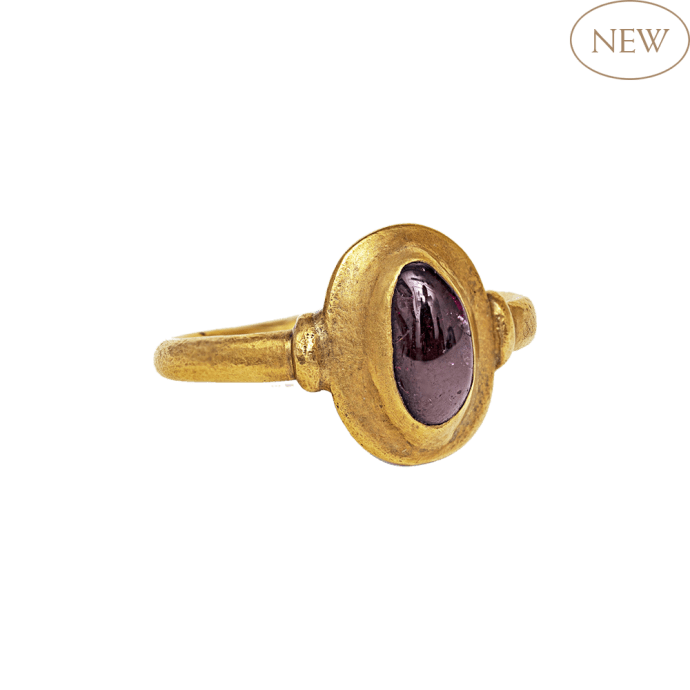





Description
Minimalist and elegant Medieval tart-mold ring with garnet
Gold ring with almost round section hoop, slightly widened towards the ends with ornamental ring collar. The oval bezel is formed of a flat base and tapered top and set with an irregular-shaped oval garnet cabochon. The ring shows signs of wear through age and is good wearable condition.
Provenance:
Formerly in a private British collection
Literature:
In the Middle Ages throughout Western Europe rings with gemstones were most popular. The stones were en cabochon, carefully polished but left in their natural form. Each stone had a special meaning for the wearer, such as a love ring, or one with magical and protective qualities. The stones came either from Europe (as is likely the case for this garnet) or were imported from faraway countries in the Far East. Similar ring designs are found in various Western European countries, such as Denmark, France, England and Germany, as fashions were widespread through trade connections. During this period gems were deemed as valuable treasures, and rings made of gold would have been an indicator of the wearer being of high status. The garnet was often used a substitute for ruby, traditionally symbolic of love, meaning that this ring may have been given for a betrothal or a wedding.
Due to the shape of the bezel the design is often described as a “pie-dish” or “tart mold” ring. The earliest example is thought to be from the twelfth century, but the design remained highly fashionable into the thirteenth and fourteenth centuries.
For parallels in museums with slight variations, cf. rings from the Colmar Treasure, Musée de Cluny-musée nationale du Môyen Âge, Paris (exh. cat. Treasures of the Black Death, Wallace Collection, London 2009, p. 76, no. 22a); Ashmolean Museum, Oxford (Scarisbrick 1993, pp. 24-25); Victoria and Albert Museum, London (Oman 1930, no. 258); Alice and Louis Koch Collection, in the Swiss National Museum, Zurich (Chadour 1994, vol. 1, no. 566); the Nationalmuseum Copenhagen (Lindahl, 2003, nos. 96-97), The Hashimoto Collection of the National Museum of Western Art, Tokyo (Scarisbrick 2004, no. 112). Cf. also Scarisbrick 2007, p. 239, fig. 326.